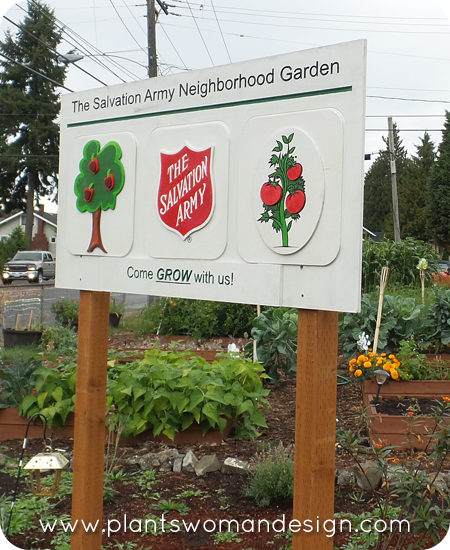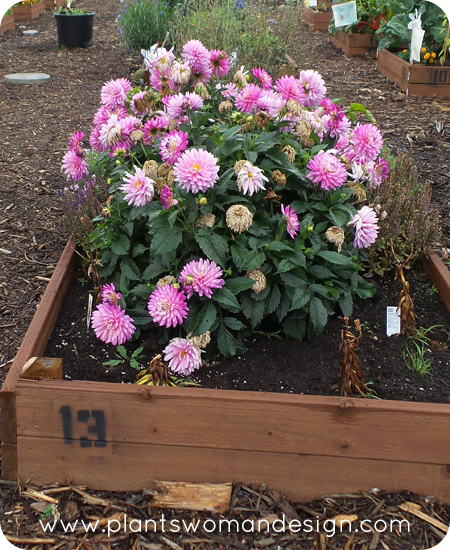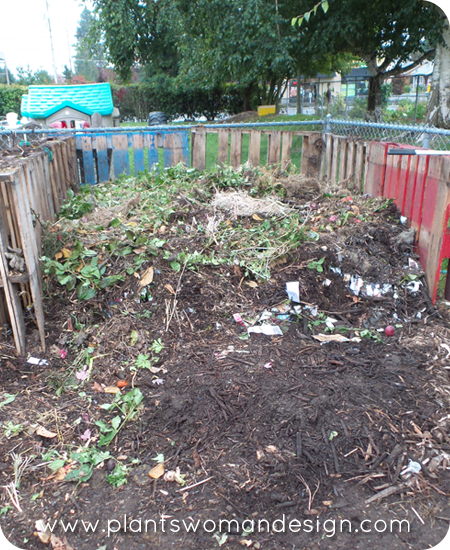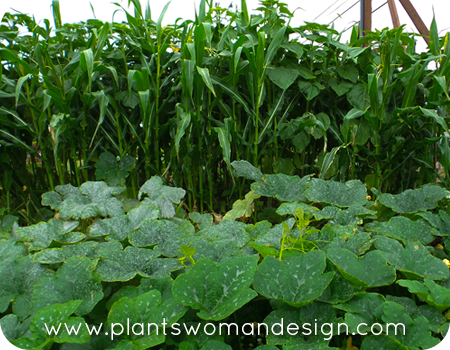Yep that’s me. I’m on the way to the airport, driving through Tacoma, and out of the corner of my eye I see a Community garden. Stop the car… Out I jump at this great little garden at the Salvation Army in Tacoma.
A vacant lot has been turned into raised beds community garden style. It was so fun to tour the beds and see signs where people were proudly claiming their section of the garden. I think it is so cool to see people growing vegetable and fruit but its really cool to see people growing flowers just for pleasure.
Several beds just had flowers, bright spots in an rougher urban area.
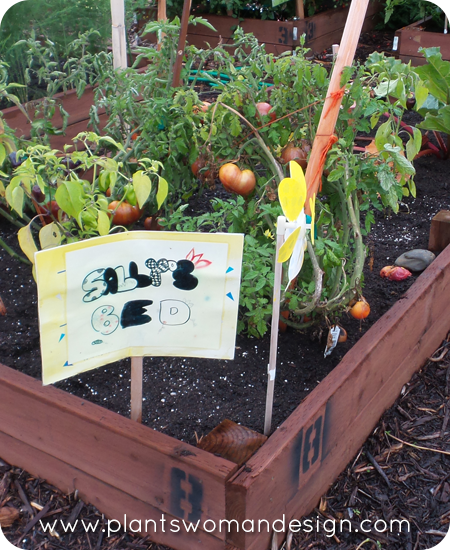
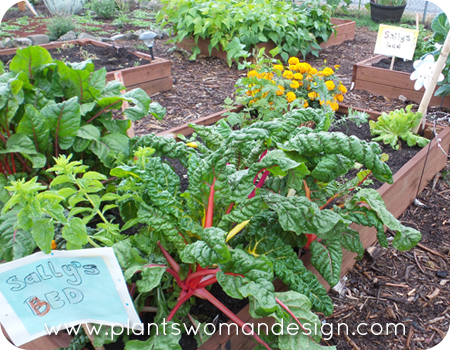 While I was touring I spotted a gentleman tossing debris so I asked him about the garden.
While I was touring I spotted a gentleman tossing debris so I asked him about the garden.
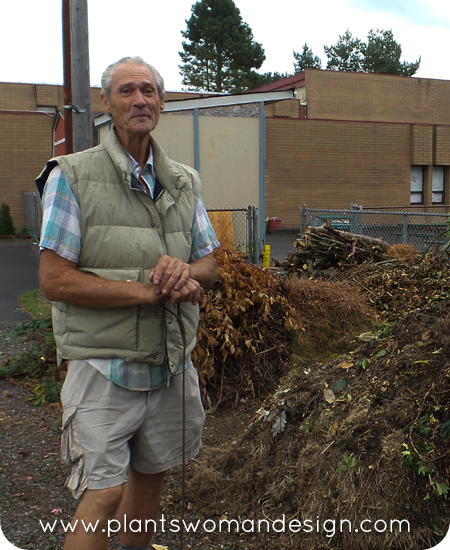 He told me his name was Claude and he was in charge of making soil (he laughed and said get it Claude? ) then he explained his formula for making soil. He uses weeds, leaves, woody twigs and cardboard. He piles the debris into separate piles for a month then he creates a pile that incorporates all the elements with cardboard in between. Within another month the soil is ready. He showed me his pile of ready soil and it looked awesome. Light texture, with some small twigs and dark color.
He told me his name was Claude and he was in charge of making soil (he laughed and said get it Claude? ) then he explained his formula for making soil. He uses weeds, leaves, woody twigs and cardboard. He piles the debris into separate piles for a month then he creates a pile that incorporates all the elements with cardboard in between. Within another month the soil is ready. He showed me his pile of ready soil and it looked awesome. Light texture, with some small twigs and dark color.
We talked briefly about Tagro which is a sludge byproduct sold by the City of Tacoma. It was given to the garden for free but Claude did not like to use it. He said it was ‘junk’. I used it years ago and found it lacking also. It had a good beginning composition and spread easily. It worked for about 6 months. Then the soil turned into raw sawdust. This was the filler that they used to mix the sludge in with. Plants struggled from there on out because the un-composted sawdust robbed plants of nitrogen while it broke down further. I’ve seen this same soil making method in England and have used it in my compost bin to create good light compost.
Claude says that the garden works well. He has been involved in several other Community Gardens, but this one works really well. He feels the key is to have people working in the garden that work for the garden as a whole not just their own beds. There are several volunteers like Claude that help with soil, weed the edges and the pathways and help people who work and can’t get to their beds during the week. He even met his current girlfriend while they worked in the garden together. Their shared interest in the community garden turned into a shared interest in each other.
The gardeners here pay $40 per raised bed. All the beds are occupied and they have a waiting list for next year. There is another vacant lot next door that the Salvation Army is going to clear and create more space for the garden.
I jumped back in my car and got on the road to the airport again. It was so fun to stop and meet another gardener. Claude gave me his email and phone so we can keep in touch. I love the stories behind community gardens and the differences between them. Check out your area and see what is near you. Send me an update on cool gardens you find.


